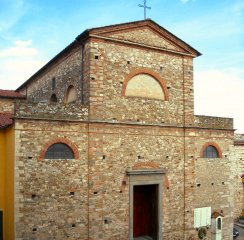
Parrocchia
Santi Pietro apostolo e Marco evangelista
Pieve a Nievole
Real estate
Sts. Peter Apostle and Mark Evangelist’s Church
The building does not show significant architectural
features. Finished in 1846, the church is a basic example of
neoclassical style and this is most likely what makes it admirable.
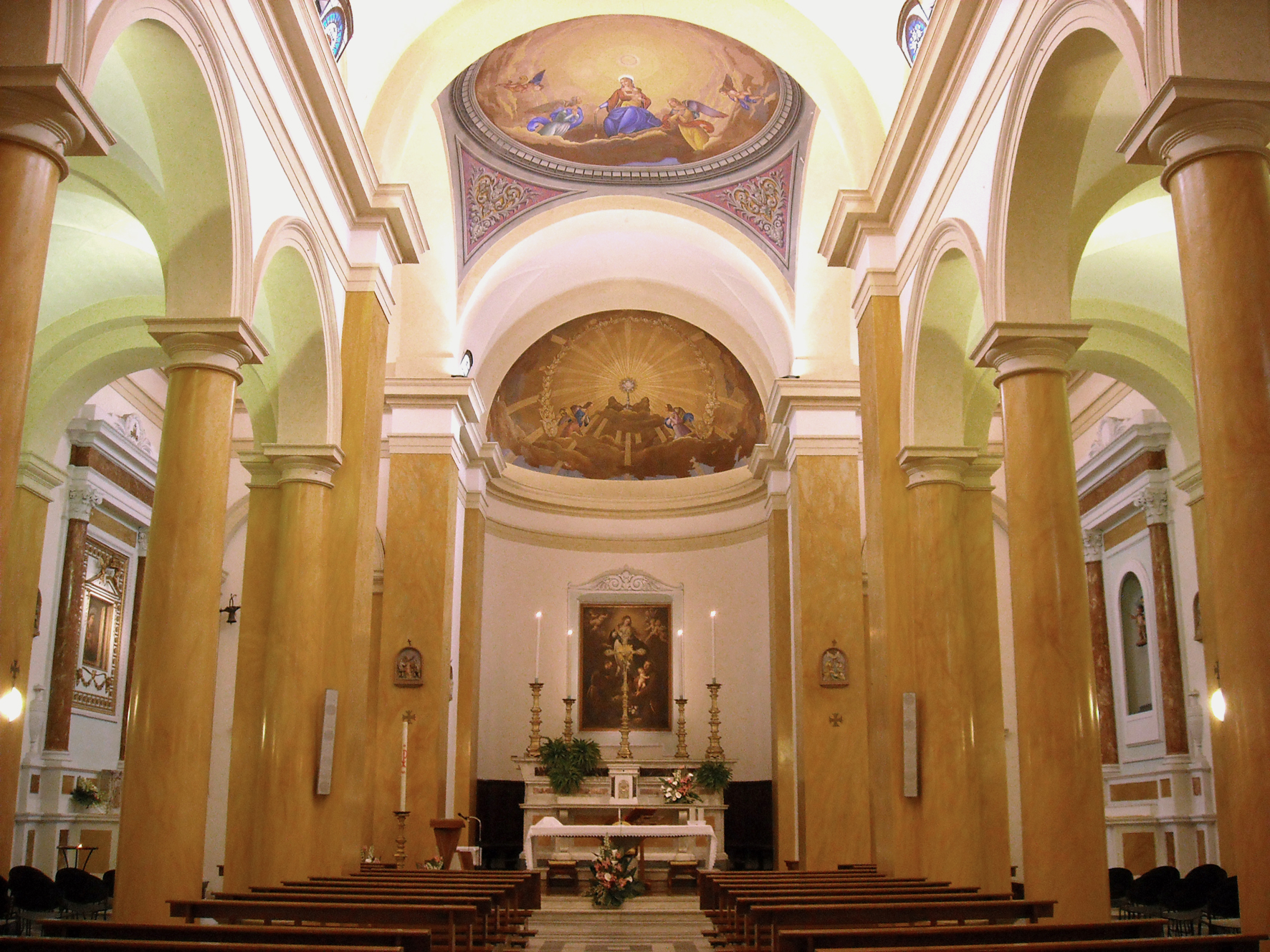 The recent restoration work (1994) focused on the mere structure of the building,
trying to highlight its own clear lines, by removing all those furnishings that
may have deflected attention from the church's plain outline. The outer facade
consists of a large rough stone wall, which was probably intended to be highly
ornamented at a later time.
The recent restoration work (1994) focused on the mere structure of the building,
trying to highlight its own clear lines, by removing all those furnishings that
may have deflected attention from the church's plain outline. The outer facade
consists of a large rough stone wall, which was probably intended to be highly
ornamented at a later time.
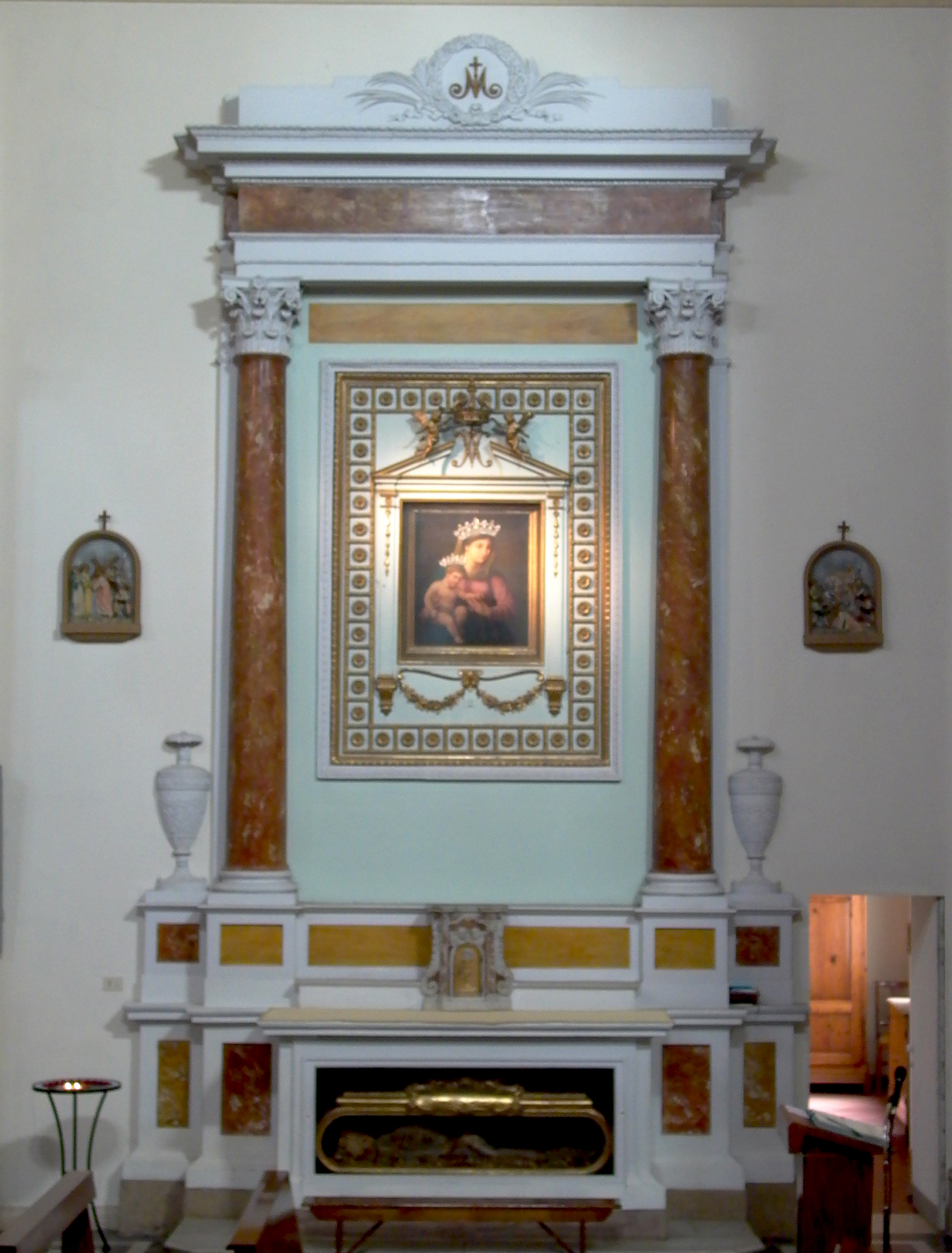
Inside there are two noteworthy lateral altars: one dedicated to the Virgin Mary, the other one to St. Anthony of Padua, both made of plaster and fake marble by the Bernardini family, expert craftsmen skilled in stuccowork. Behind the high altar, the apsidal recess houses a beautiful painting by Panfilo or Giuseppe Nuvoloni, both mid-18th century Lombard painters. The canvas portrays the Immaculate Mary between St. Francis of Assisi and St. Anthony of Padua and was given as a gift to the parish by the Minnetti family in 1957.
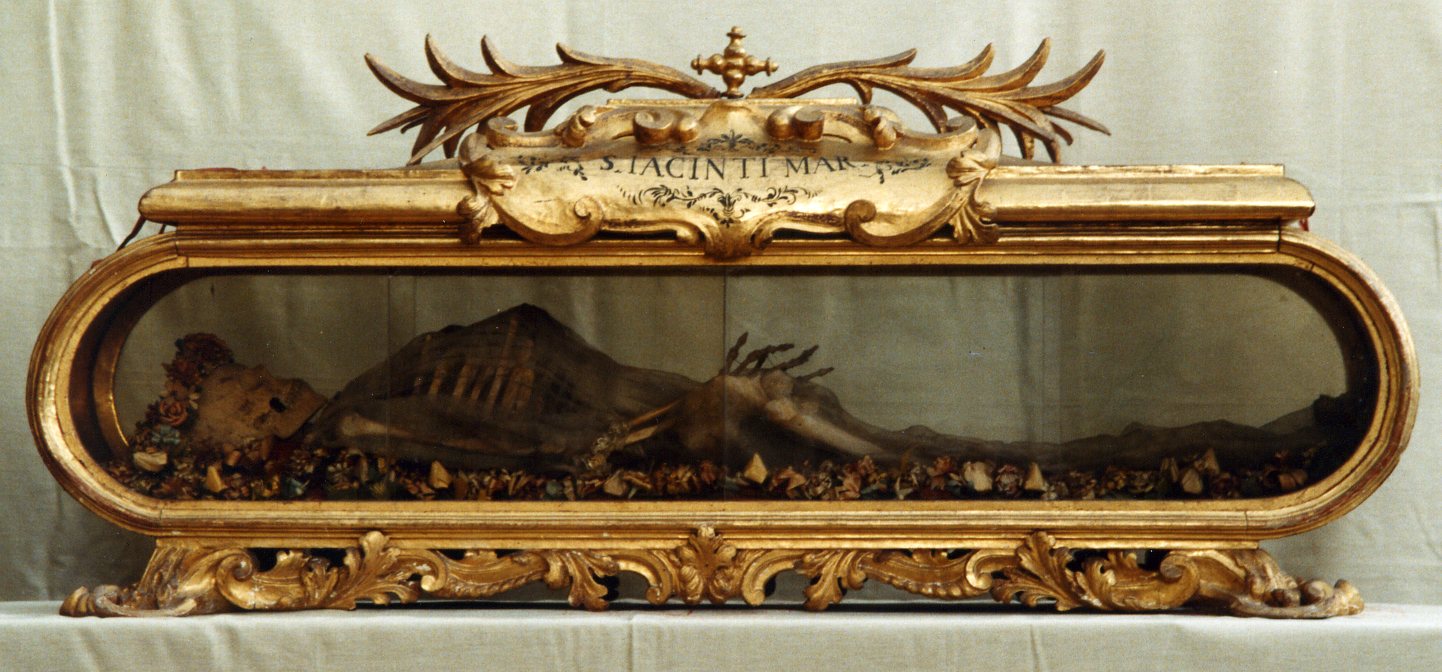 Curiosity:
Below the altar dedicated to Mary you can find a golden and high-quality shrine
containing the entire body of St. Giacinto. The relic is from Villa
Bellavista, located in Borgo a Buggiano and was brought here during the 1950s.
The shrine is not the original one: it was indeed bought in Rome by an antique
dealer who wanted the Saint’s body to be exhibited there. Nothing do we know
about who this fellow was: carried out investigations always had negative outcomes.
It was probably a martyr's body lying in the Roman catacombs which was subsequently
transferred to the Marquis Feroni family chapel at Villa Bellavista, a very
common practice in the 17th century.
Curiosity:
Below the altar dedicated to Mary you can find a golden and high-quality shrine
containing the entire body of St. Giacinto. The relic is from Villa
Bellavista, located in Borgo a Buggiano and was brought here during the 1950s.
The shrine is not the original one: it was indeed bought in Rome by an antique
dealer who wanted the Saint’s body to be exhibited there. Nothing do we know
about who this fellow was: carried out investigations always had negative outcomes.
It was probably a martyr's body lying in the Roman catacombs which was subsequently
transferred to the Marquis Feroni family chapel at Villa Bellavista, a very
common practice in the 17th century.
 The recent restoration work (1994) focused on the mere structure of the building,
trying to highlight its own clear lines, by removing all those furnishings that
may have deflected attention from the church's plain outline. The outer facade
consists of a large rough stone wall, which was probably intended to be highly
ornamented at a later time.
The recent restoration work (1994) focused on the mere structure of the building,
trying to highlight its own clear lines, by removing all those furnishings that
may have deflected attention from the church's plain outline. The outer facade
consists of a large rough stone wall, which was probably intended to be highly
ornamented at a later time.
Inside there are two noteworthy lateral altars: one dedicated to the Virgin Mary, the other one to St. Anthony of Padua, both made of plaster and fake marble by the Bernardini family, expert craftsmen skilled in stuccowork. Behind the high altar, the apsidal recess houses a beautiful painting by Panfilo or Giuseppe Nuvoloni, both mid-18th century Lombard painters. The canvas portrays the Immaculate Mary between St. Francis of Assisi and St. Anthony of Padua and was given as a gift to the parish by the Minnetti family in 1957.
 Curiosity:
Below the altar dedicated to Mary you can find a golden and high-quality shrine
containing the entire body of St. Giacinto. The relic is from Villa
Bellavista, located in Borgo a Buggiano and was brought here during the 1950s.
The shrine is not the original one: it was indeed bought in Rome by an antique
dealer who wanted the Saint’s body to be exhibited there. Nothing do we know
about who this fellow was: carried out investigations always had negative outcomes.
It was probably a martyr's body lying in the Roman catacombs which was subsequently
transferred to the Marquis Feroni family chapel at Villa Bellavista, a very
common practice in the 17th century.
Curiosity:
Below the altar dedicated to Mary you can find a golden and high-quality shrine
containing the entire body of St. Giacinto. The relic is from Villa
Bellavista, located in Borgo a Buggiano and was brought here during the 1950s.
The shrine is not the original one: it was indeed bought in Rome by an antique
dealer who wanted the Saint’s body to be exhibited there. Nothing do we know
about who this fellow was: carried out investigations always had negative outcomes.
It was probably a martyr's body lying in the Roman catacombs which was subsequently
transferred to the Marquis Feroni family chapel at Villa Bellavista, a very
common practice in the 17th century.Corpus Domini Company
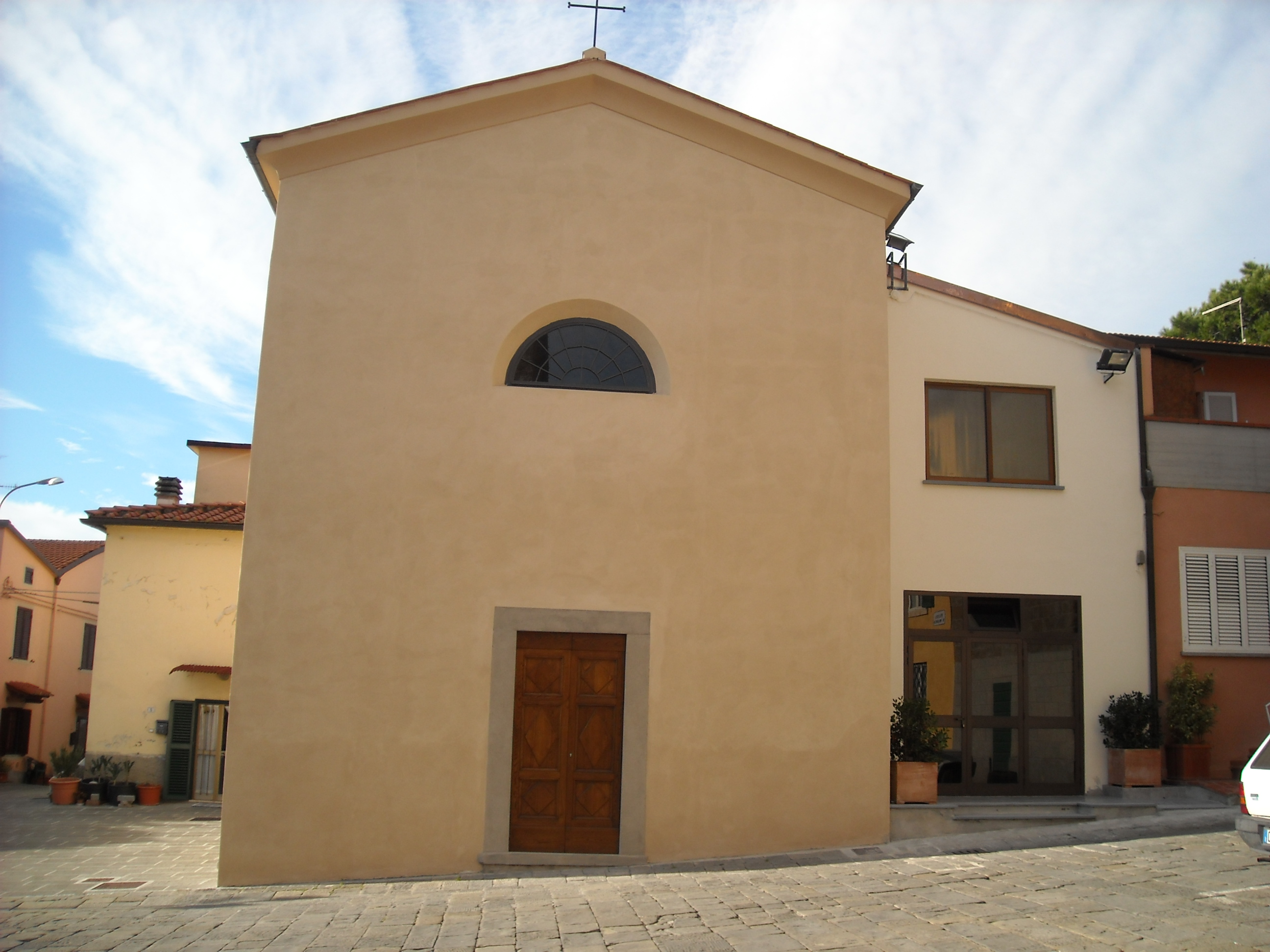
The beautiful Corpus Domini Company's chapel was built
toward the end of the 17th century. The chapel is located in front of
the ancient church, which had already fallen into disuse and been downgraded to
rectory church under the title of St. Mark at that time.
The chapel, whose facades were completely restored and brought back to their original forms in 2012, is wide, bright and it is still preserving its plain structure, as well as its pictorial decorations (probably later created in the 19th century).
The stone altar is unbroken and it is a remarkable copy of another 1655 altar, located in the ancient church and dedicated to the Virgin Mary.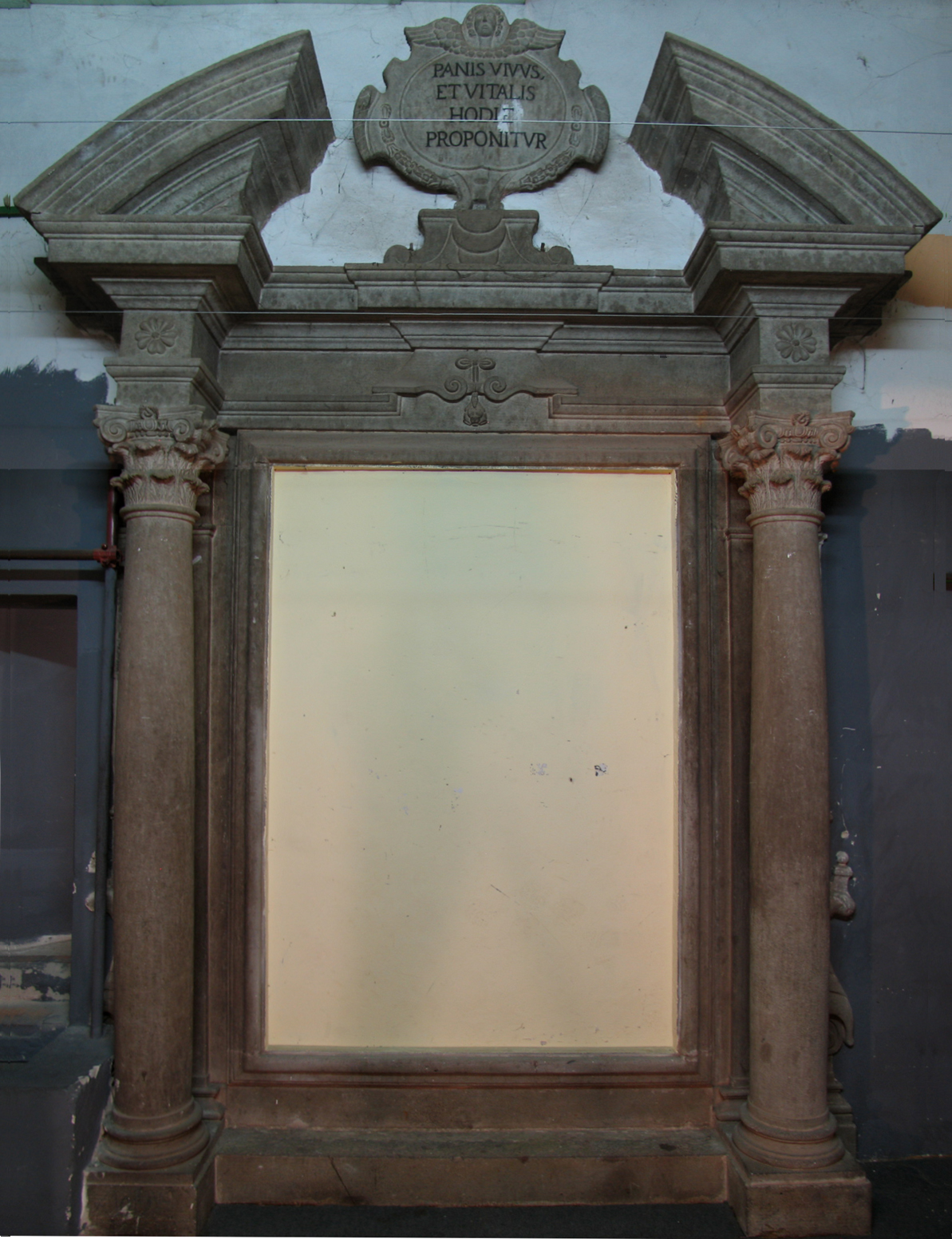
The original canvas portraying the Holy Supper painted by Giovanni Maria Corsetti in 1707 has been recently restored and it is actually situated within the parish church, on the facade’s counter-wall.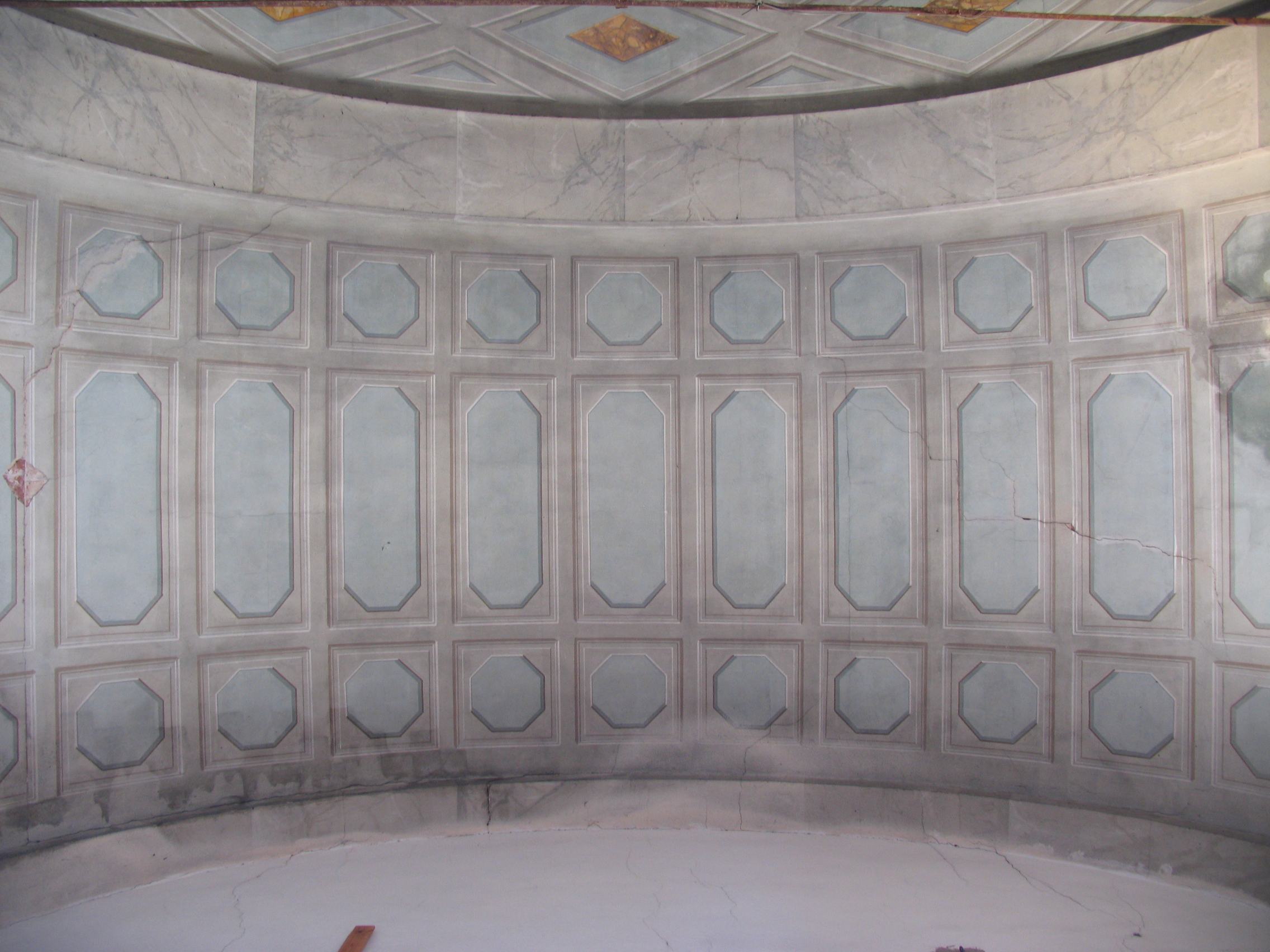 This beautiful building was earmarked to varied purposes throughout the decades:
from being a factory it ended up serving as an amateur theatre.
This beautiful building was earmarked to varied purposes throughout the decades:
from being a factory it ended up serving as an amateur theatre.
At the moment it is being used as warehouse, but it deserves to be restored and brought back to its original function.
The chapel, whose facades were completely restored and brought back to their original forms in 2012, is wide, bright and it is still preserving its plain structure, as well as its pictorial decorations (probably later created in the 19th century).
The stone altar is unbroken and it is a remarkable copy of another 1655 altar, located in the ancient church and dedicated to the Virgin Mary.

The original canvas portraying the Holy Supper painted by Giovanni Maria Corsetti in 1707 has been recently restored and it is actually situated within the parish church, on the facade’s counter-wall.
 This beautiful building was earmarked to varied purposes throughout the decades:
from being a factory it ended up serving as an amateur theatre.
This beautiful building was earmarked to varied purposes throughout the decades:
from being a factory it ended up serving as an amateur theatre. At the moment it is being used as warehouse, but it deserves to be restored and brought back to its original function.
Bell Tower Base
 The current bell tower’s base is all that is left in elevation view of the late-12th century church. The bell tower which you can see today was built only in 1931.
We cannot say when the old tower collapsed, nonetheless, recent studies (Elisa Maccioni)show that in an old eighteen-century sketch depicting a panoramic view of the site it seems possible to identify the ancient bell tower still upright, even though with obvious signs of ruins.
The current bell tower’s base is all that is left in elevation view of the late-12th century church. The bell tower which you can see today was built only in 1931.
We cannot say when the old tower collapsed, nonetheless, recent studies (Elisa Maccioni)show that in an old eighteen-century sketch depicting a panoramic view of the site it seems possible to identify the ancient bell tower still upright, even though with obvious signs of ruins.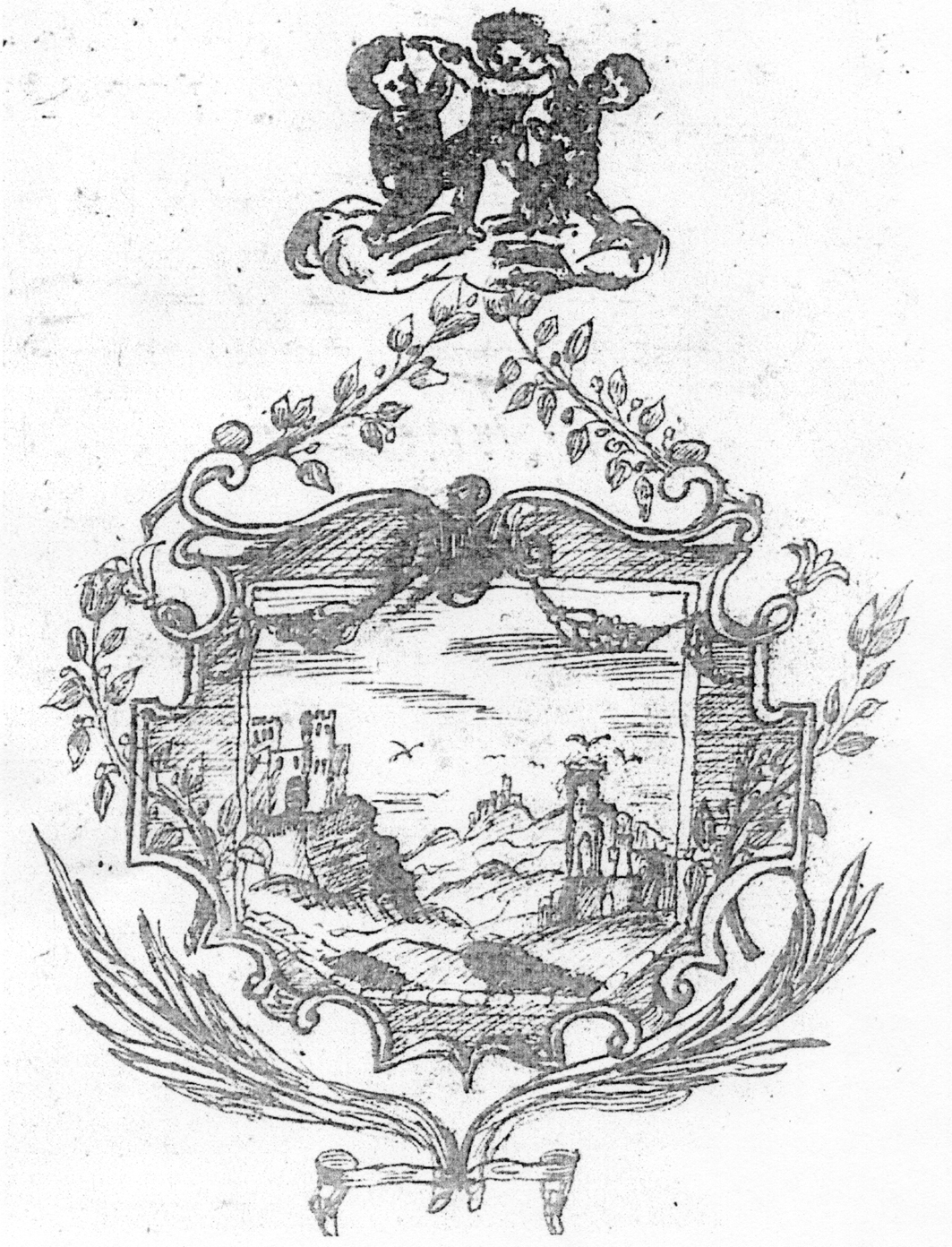
Of really massive proportions (1,2 m. thick), it was part of the old church walls, whose existence is certified by several archaeological traces. The decorative stones at the base were deteriorating because of the weather conditions and pollution, so they were completely restored in 2008.
Curiosity: Among the bells still in use today, the smallest one is bearing the inscriptions engraved on the eldest one, which dates back to 1191. The old bell was subsequently molten and its size was increased.
NB - All the references to Quaderni Pievarini and Atti Tavole Rotonde can be downloaded from www.sanpietroaneure.it, our historical studies centre website.
 Paintings
Paintings